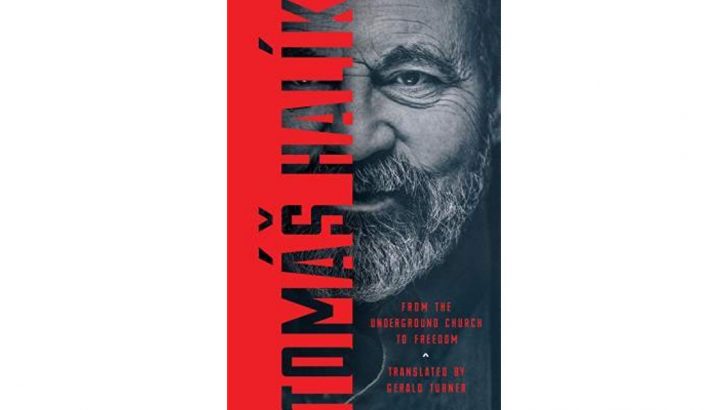From the Underground Church to Freedom
by Tomáš Halík (Notre Dame Press, $US35.00 / £39.50)
Frank Litton
The 1950s were grim in Czechoslovakia. The promise of liberation had not delivered. The state acquiesced in a foreign-based orthodoxy which it imposed with brutality. Censorship stifled thought.
It was into this Communist dominated world that Tomas Halík was born, in Prague, in 1948. Halík, priest, philosopher, and theologian played a distinguished role as Czechoslovakia emerged from tyranny. His writings attract a wide readership. He was awarded the Romano Guardini award “for outstanding merit in interpreting contemporary society” in 2010 and the Templeton Prize for his contribution to religious dialogue in 2014.
He has been compared to Thomas Merton for the skill he shows in reading the signs of the time in the perspective of the Gospels. His memoir accounts for the experiences which shaped his thought.
His parents came from well-to-do families. His father was a librarian, a safe berth for an intellectual, far from the front line, where he quietly built up an archive of the work of Karl Capek, the famous author, now a persona non grata with the regime.
Intellectuals
This dissidence and the circle of intellectuals it attracted made it unlikely that the young Tomas would collaborate with the status quo. What was unlikely and what shocked his parents was his conversion to Catholicism. Moreover, he answered a vocation to the priesthood.
The Church just about survived the Communist regime. Starved of resources, it was tightly controlled and supervised. Halík chose to join the underground church.
Tutored by priests who had been imprisoned and tortured, he was ordained in secret. A worker priest, he trained in psychology and therapy and worked in a business school while building up the clandestine church and assisting in efforts to revitalise the Faith.
It is one thing to live in interesting times, quite another to write interestingly about them. Halík achieves this. He tells of the thaw in the 1960s and his opportunity to study in Wales. Then the Russian tanks rolled in; spring turned to winter. He decided to return to Prague forgoing the chance to remain in the UK.
He joined the resistance working with Václav Havel and his allies. He was a significant player in the Velvet Revolution in 1989, helping guide the Church through the transition to freedom. Brought for a time to the Vatican, he was an adviser to St. John Paul, whose sense of humour he notes.
This dissidence and the circle of intellectuals it attracted made it unlikely that Tomas would collaborate with the status quo”
Halík enjoyed the exhilaration of the liberation. He studied in both Rome and Poland, winning the doctorates that qualified him to teach both philosophy and theology.
Then he came up against what we too readily forget, the damage done by years of oppression. Those who live in fear demand security even when the cause of fear departs. Their imaginations curbed by repression are slow to widen.
Halík was wounded by the opposition he encountered, in some quarters, to his efforts to renovate Catholic education. His Faith was shaken. His reflections on this “dark night of the soul” are particularly interesting and add depth to the book.
In Communist regimes the all too visible hand of the party brooks no opposition. In neo-liberal regimes the invisible hand of the market holds sway. It both, it is a case of everyone for themselves .
It is not surprising, then, that Václav Havel’s vision of a politics rooted in mutual respect and regard for the common good was displaced by neo-liberalism with its politics as the play of power.
Depressing certainly, but not for Halík, a cause of despair. Read this account of the ‘Church in the world’ to learn where he finds grounds for hope.


 Photo: Goodreads.com
Photo: Goodreads.com 